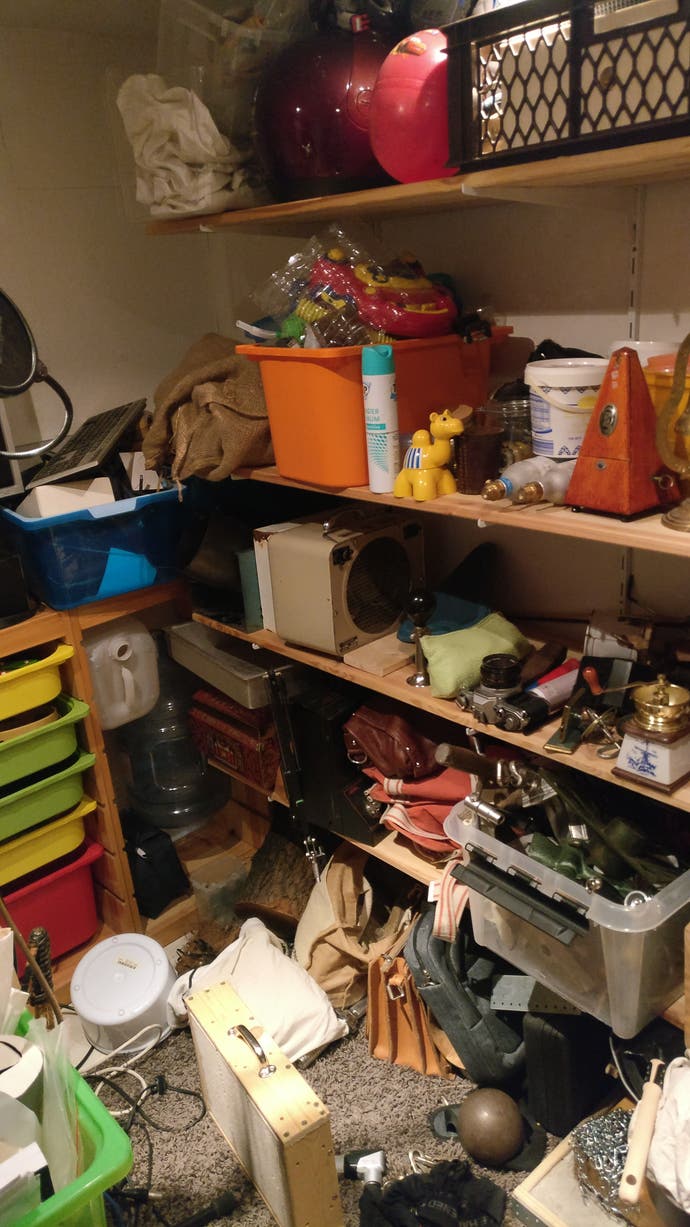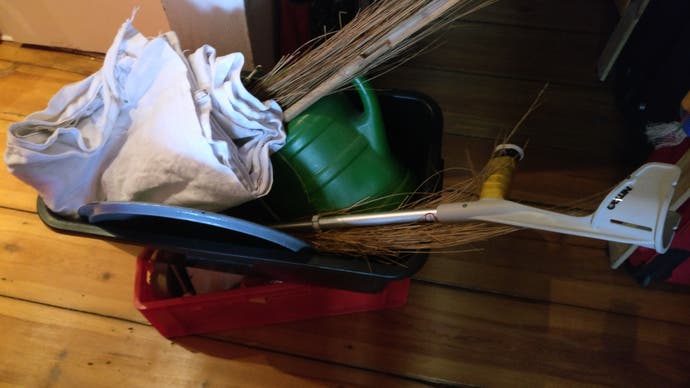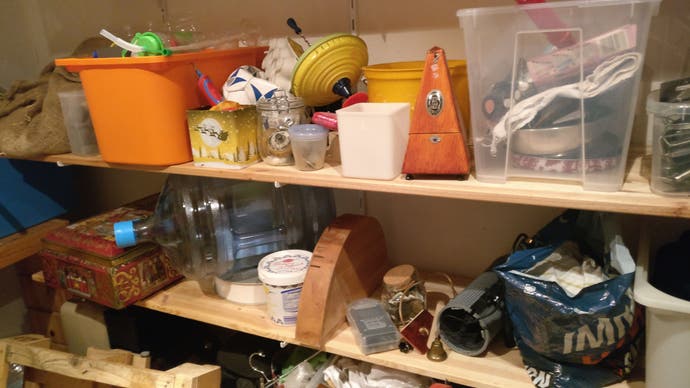NUTS' foley artist Almut Schwacke loves the art of manual sound design
“Making sound yourself is like turning something from 2D into 3D.”
Noodlecake Studios' squirrel surveillance game NUTS stands out in particular for its exemplary art style and the way it sounds - no other game gave me the feeling of being in a forest quite like it. The latter aspect is courtesy of Almut Schwacke. Among her many skills - she's a composer, multi-instrumentalist, singer, sound designer and sound editor - I took a particular interest in foley design. Foley design is not a discipline many of us are familiar with, but it's an integral part of sound design.

Schwacke has worked on all things sound in films, TV adverts and games for over 14 years now, and you can find games such as Curious Expedition 1 and 2, Dead Island 2 and Anno 1800 on her resume. In NUTS, her wealth of talent is on full display - not only is it one of the most realistic-sounding virtual forests I've come across in a long time, Swacke also plays the role of your boss Nina, composed the music and performs the ending theme. It was on Schwacke's website that I came across the term foley artist first, neatly separated from sound design work - but why?
According to Schwacke, the term foley artist originated from film. In the era following silent film, sounds were added the same way as music, by artists performing live to the moving picture. Nowadays, that approach isn't as viable anymore, and so we have foley artists matching exactly what you see on screen, as well as sound designers who don't necessarily approach their work as a live performance. This distinction lead to the two different fields of work.
"I have a masters in sound engineering and was originally involved with classical music," Schwacke says when I ask her how she ended up making sounds for a living. "Then I worked in film and TV dubbing - in Germany, both TV and film are traditionally dubbed into German ahead of release - and from there I got a job in sound editing for film. For one project, I worked as a foley editor, editing the sounds a foley artist sent over for further use, and that's when I saw a foley artist work for the first time.
"What I saw instantly made me fall in love with the profession - it was just this grumpy, middle-aged old man sitting in a garage full of junk, but when he dug something out and started making noise with it, I was blown away. This guy really knew how to make a scene come alive, from the sounds of clothes to plants rustling in the wind. It was really like turning something from 2D to 3D."
""What I saw instantly made me fall in love with the profession - it was just this grumpy, middle-aged old man sitting in a garage full of junk, but when he dug something out and started making noise with it, I was blown away."
But before Schwacke could take up the job herself, she had to find a mentor, as there is no formal way to learn foley design. She found the help she needed in an 80-year-old man, and to this day exchanges knowledge with other colleagues. It's an almost entirely male profession, consisting largely of freelancers, and it suffers from competition and pricing pressure like many other jobs, not least the gaming industry. As such many foley artists would rather keep the secrets of the trade to themselves, she says.



3D is a great way to describe the NUTS forestry surround-sound experience. When you walk through the game's woods, you can take all the time you want to listen to the wind in the trees and the crunching of leaves underfoot. "Every chapter plays in a different part of the woods, and I put a lot of work into changing the sounds accordingly so that each bit of landscape sounds unique," Schwacke says. She also placed 3D sound elements in certain locations, such as birds in specific trees, so that you hear them when you approach the tree and the sound gets quieter the further you walk away. Crunching leaves, footsteps, trickling water - these are all noises you can imagine someone making manually, but there's a lot to something even as seemingly simple as a footstep.

While you want to be able to hear certain imperfections in film to make the sound feel more authentic, like the creak of a leather shoe, in games, walking sounds need to be even because they loop. If you heard an imperfection over and over again, your brain would start to focus on it, and the walking sound wouldn't feel natural anymore. Foley artists like Schwacke think about such intricacies of sound a lot, as well as the unique issues gaming presents, including how sound has to behave when it's a player making it. "You usually also have a sound for when someone comes to a halt, but since you never know when a player stops walking, it's easier to forego that sound in games altogether," Schwacke says.
As part of their work, every foley artist owns dozens of shoes, but anything that makes a squeaky sound is also a welcome tool. You can use hinges from chests for the classic squeaky door, for example. Different resonating bodies used with the hinge change its sound - a hinge on a drawer should sound differently than a hinge on a door, for example.


While foley is still rather rare in games, as sound designers more often make and edit field recordings if they can't get a sound another way, there is also a clear advantage to using foley. "In games, you're always on the hunt for customisable sounds," Schwacke says. "Sounds you download from a library often only come in very few variations, I on the other hand can make as many variations and tonal modulations as I need."
When I ask if sounds are more difficult to make for things that have no natural equivalent, like monsters or futuristic guns, the answer is as surprising as it is obvious. "It's much more difficult to make sounds if the listener already has an idea of what something should sound like," Schwacke says.
"Think of an old car. While most of us can't tell car models by sound, we do have an idea of what different types of car sound like, and each car makes a multitude of sounds, from starting to going around a corner to gear shifting. It's a lot to keep in mind. I was once asked to design the sounds for an in-game hyena you could fight, that one nearly drove me crazy. There are no sound libraries of pained hyena noises out there, and for good reason!"


